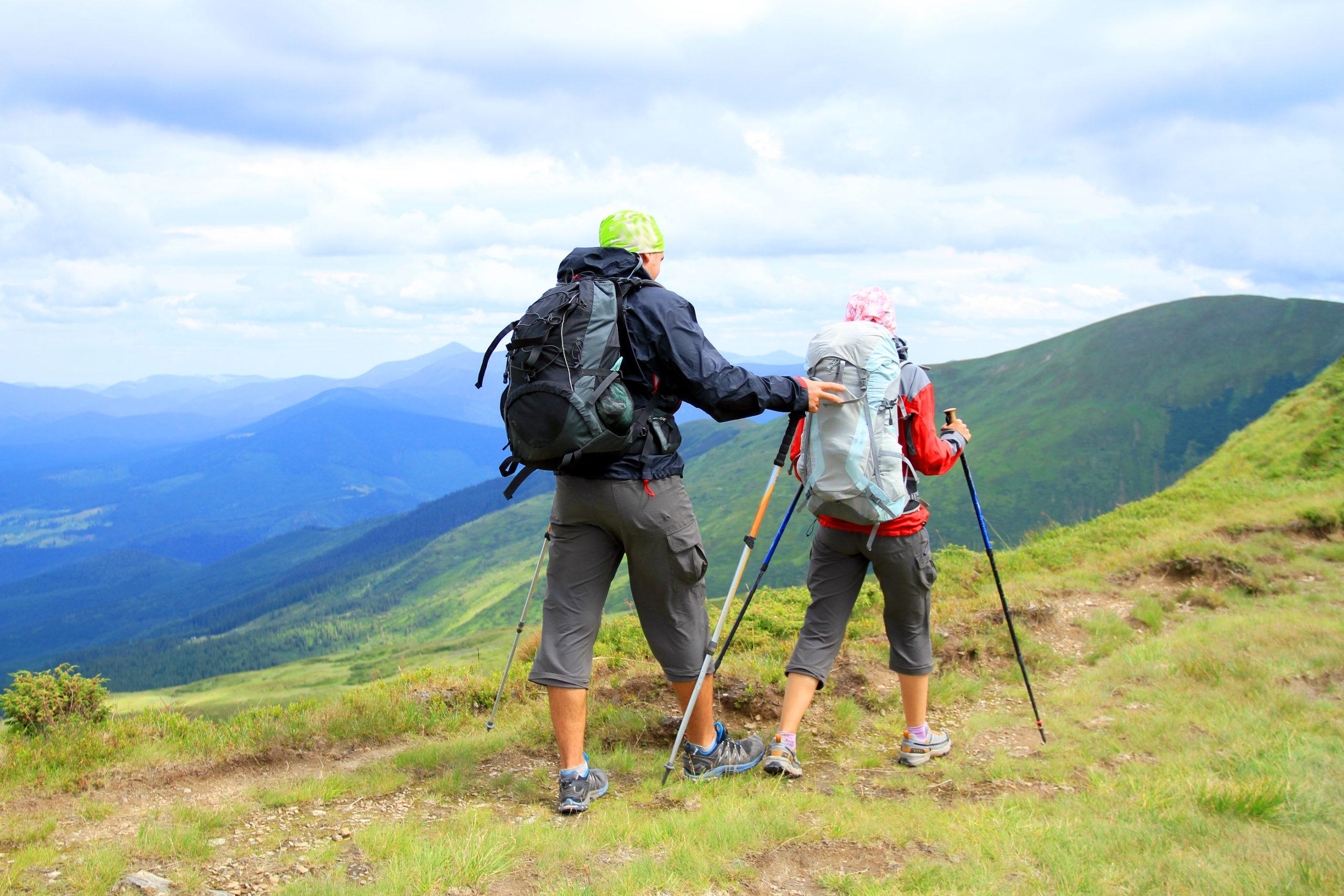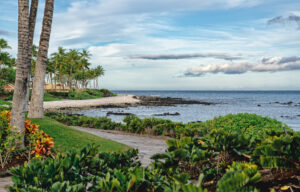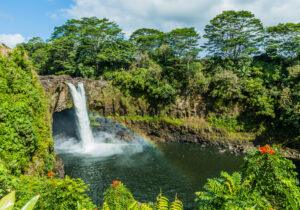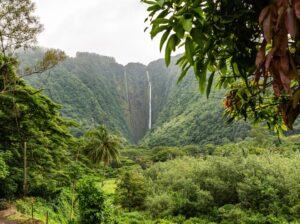The Hiking Guy on the benefits of trekking poles for hiking. You don’t need trekking poles to join us on our most active Volcano Hiking Adventure. For the serious hiker you may want to consider them for your other hiking activities.
Trekking poles are standard equipment for many experienced hikers – but do you really need them? The answer is maybe—there are a few conditions that I use hiking poles under and some I do not. Here’s how you should determine whether you need trekking poles or not.
A trekking pole (also known as a hiking pole) is basically a ski pole with a handle that you use when hiking. Trekking poles are almost always used in pairs. There is also something called a hiking staff (also known as a hiking stick) that is a single pole. Most hikers go with two trekking poles over a hiking staff. I think the pair just provides more benefits.
After years of using trekking poles, this is what I’ve learned about using them (and not using them).
Why Use Trekking Poles?
- I use hiking poles when I have a heavier backpack on. There’s no getting around that when you have some serious weight on your back, hiking poles can help keep you stable, especially on a steep incline or decline. Do they take strain off my knees? Not really, but more on that later.
- If your hike requires stream crossings, trekking poles are great. Having two poles to anchor your way across a series of slippery rocks is invaluable. Even if I’m not using trekking poles on my hike, I’ll usually carry them in my pack just for this reason. Similarly, if I need to test the depth of a stream or see how muddy the bottom is, trekking poles get the job done.
- If you are hiking in winter conditions, trekking poles are great for balance on a slippery and snowy trail. And when you’re crossing a frozen stream, using the trekking pole to test the ice is a great option.
- Trekking poles are good to have in bear and mountain lion country. I’ve never actually fought off an animal, but I’ve often thought that if I was attacked, having trekking poles ready in hand would be better than not having them.
- If you hike in an area with poison ivy, poison oak, nettles, or any other plant you want to avoid, trekking poles provide an easy way to gently push them to side and hike by.
- If you have a steep downhill, trekking poles can provide good anchor points to balance against as you hike down.
- Likewise, if you’re on a steep upslope, you can use poles to dig in and pull yourself up on.
- If you want to make your hike more of a full body workout, there’s no denying that moving your arms back and forth will help you expend a little more energy. It’s also nice to get in a rhythm with hiking sticks.
- If your hands swell when hiking, using trekking poles will keep the hands closer to the level of the heart, improving blood return to your heart.
- You can use trekking poles as supports for an ultralight shelter. This will save you some weight in your pack. Even if you’re just day hiking, having a ultralight shelter in your pack (and hiking poles to support it) is a great way to be prepared for a survival emergency.
Do Hiking Poles Really Save Your Knees?
Many articles quote a 1999 study that says using trekking poles takes up to 25% of the strain off of your knees. The reality for most hikers isn’t that great. In fact, there studies that show that there’s no difference whatsoever between shock absorbing poles, regular poles, and no poles.
Personally, I’ve had knee pain with and without poles. I stopped my knee pain completely by simply shifting my weight. Instead of heel striking, I now focus on stepping on my fore and mid-foot. This engages the “natural shock absorbers” of my hamstrings to buffer any shock in my step. I think hiking with trekking poles naturally allows people to shift their weight (and foot strike) forward, which is probably a factor in those reduced strain studies. So if you want to help your knees out, I recommend shifting your weight forward when hiking with trekking poles.
When Not to Use Trekking Poles
I used trekking poles religiously for years. And then I stopped for a while and it felt great to “just walk” without another piece of gear. Here’s why I stopped.
- I was hiking to connect with nature, and the poles started to seem like a barrier between myself and the earth. So instead of using a pole to balance when descending, I now reach out and touch trees, rocks, and dirt. It just feels better.scramble down. You’ll feel like a kid again.
- Ditching the hiking poles was one less thing to deal with. I put my boots and pack on, then hike. Easy.
- I realized that using poles was not good for my balance and core. When I don’t have trekking poles, I need to stick my arms out and shift my weight to balance. This engages my core and natural balance processes instead of turning them off.
- On longer hikes, not swinging my arms when I walk saves me energy. It’s not a big deal for shorter hikes, but if you’re doing something like a 22 mile Mt Whitney day hike, having another 1-5% of energy in your tank is a big deal.
So Should I Get Hiking Poles?
Some people absolutely love hiking with trekking poles all the time. I used to be that person. But now I mix it up depending on the circumstance. My backpack allows me to attach my trekking poles to the outside. So if I feel like using them, I just take them off and extend them. It takes 2 minutes.
Trekking Pole Recommendations
Trekking poles have some features you should look for. These are my recommendations:
- Carbon fiber and aluminum are both really light and work well. If you’re going to bang them up a lot, go with aluminum. Carbon offers a little more shock dampening, but can shatter if you really smash them around.
- Shock absorbers aren’t really necessary, but if you find a pair you like and they have absorbers, go for it.
- Get hiking sticks with cork or foam grips. Don’t get poles with hard plastic grips, they generally suck.
- When you use hiking poles, you want your elbow to be at about 90 degrees. Most trekking poles are adjustable so you can easily adjust the size. If not, REI will have a sizing chart based on your height. The type of locking mechanism on adjustable trekking poles isn’t super important. Some people recommend adjusting the height up or down based on the slope, but I’ve never met anyone who actually took the time to do this.
- Don’t worry about baskets or pole tips. As long as you have steel tips, you’ll be fine.





